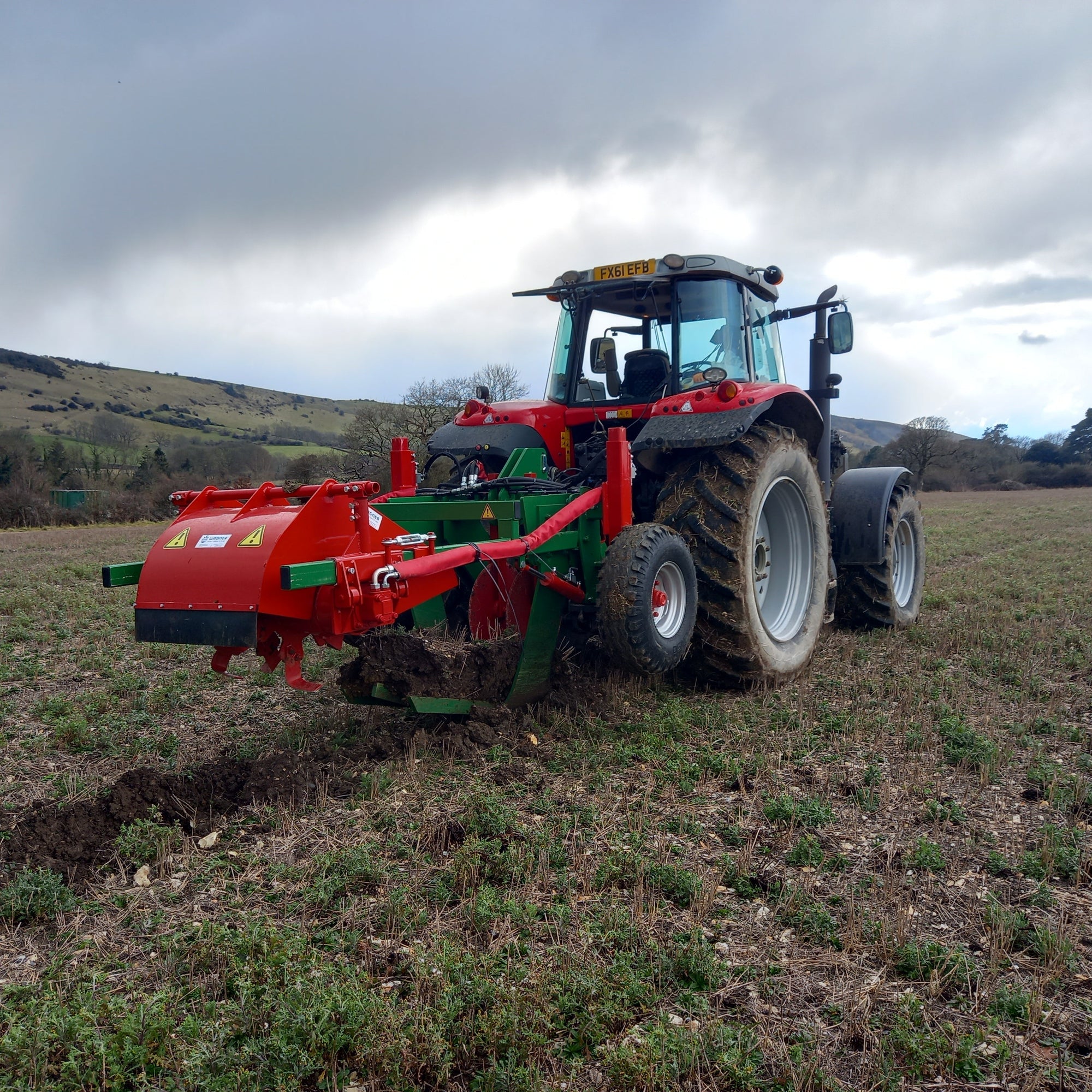

From Soil to Vine: Getting Your Vineyard Ready for Planting
Planting a vineyard is a significant investment and a long-term commitment. Good preparation is essential to ensure strong vine establishment, healthy growth, and a successful crop. The groundwork you put in before planting will determine how well your vines take root and how quickly they produce.
Ground Preparation
Vineyard preparation begins long before planting. Ideally, start in autumn the year before to allow the soil to settle and nutrients to integrate.
First, conduct a soil analysis to assess nutrient levels, organic matter, and pH. Consulting an agronomist helps determine necessary amendments like lime, compost, and fertiliser to create optimal conditions.
Managing the Soil
Preparing the soil for vines involves deeper cultivation than many other crops. The aim is to create a well-aerated seedbed that allows vine roots to establish easily. In a world increasingly focused on regenerative agriculture and minimal soil disturbance, vineyard preparation remains one of the few areas where deep cultivation is still necessary. However, strip tilling can be an option on some soils to retain most of the field's existing soil structure.
When working on heavy clay soils or sites with poor drainage, follow these steps:
-
Weed Control: Eliminate grass and weeds using herbicide or organic methods.
-
Topping and Mulching: Use a flail mower to top the fields slowly, ensuring proper mulching to improve organic matter content.
-
Adjust pH: Apply lime if needed to bring the soil pH to around 6.5 – ideal for vine growth.
-
Deep Cultivation: Subsoil in three directions to break up compaction and create deep channels for root growth.
-
Add Organic Matter: If the soil is low in organic matter, apply compost at the maximum level permitted under RB209 guidelines.
-
Ploughing: Plough the field lightly to work the top layer without bringing up heavy clay or subsoils.
-
Final Cultivation: Use a tine or disc cultivator to create a fine seedbed. Avoid using a rotovator on heavy clay soils, as it can create a compacted layer beneath the surface.
-
Nutrient Application: Apply micronutrients and fertiliser based on your soil analysis.
-
Cover Crops: Adding a cover crop at around 25kg/ha in autumn helps protect soil from erosion, adds biomass, and breaks up compacted subsoil, improving overall soil condition.
Final Preparation
In the spring before planting, mow or graze off the cover crop. Lightly cultivate the field again with a tine or disc cultivator to prepare a smooth planting bed. Reapply lime, compost, and fertiliser as required based on your agronomist's recommendations.
Receiving Your Vines
When your vines arrive, careful handling is essential to ensure they remain healthy and viable. Most UK vines are sourced from nurseries in Europe and may have spent several days in transit.
-
Storage: Keep vines in a cool, dark room at a constant temperature of around 4°C until planting.
-
Leave Them Sealed: Keep the bags sealed until you’re ready to plant to prevent the vines from drying out or waking prematurely from dormancy.
Pre-Planting Treatments
Different growers have varying approaches to pre-planting treatments, such as trimming roots, soaking them in water, or using a mycorrhizal dip to promote early root development. However, most nurseries recommend planting vines immediately after removal from storage to minimise exposure to pathogens. If you need to store vines on-site for a day or two, keep them shaded and out of direct sunlight.
Machine vs. Hand Planting
Machine planting is the preferred method for larger vineyards. It’s fast, accurate, and efficient. GPS-guided planting rigs can plant up to 15,000 vines per day, ensuring consistent spacing and depth.
For smaller sites, hand planting may be more suitable. However, hand planting is slower – a team of five can expect to plant between 1,000 and 2,000 vines per day. Careful site marking and trenching are required to maintain accuracy.
Setting Your Vineyard Up for Success
By investing time and effort in proper ground preparation and planting, you’ll lay the foundations for a healthy, productive vineyard that will thrive for decades to come – one vine at a time.



